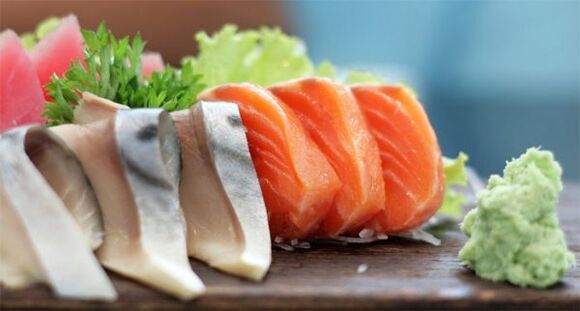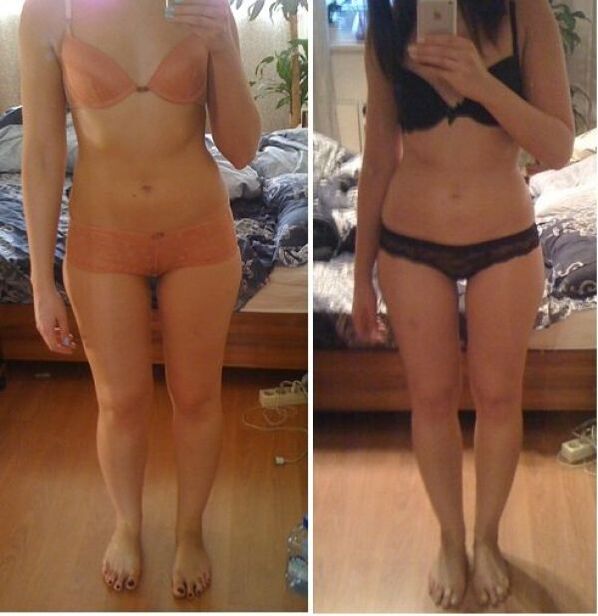Although rolls and sushi seem dietary and low-calorie compared to other dishes, the Japanese diet for 14 days is not based on them. It got its name rather because its observance requires the endurance and fortitude of a noble samurai. She's really complex. But the effort is worth it: kilos are really lost on this diet, and in the future you can easily switch to a classic healthy diet, where you cannot regain what you lost.
Japanese method of weight loss: menu and recommendations
The Japanese 14 day diet is very strict. By doing this, you wean yourself from your usual tastes, "cleanse your receptors" and feel the taste of healthy foods. Consider it not as torment or overcoming obstacles, but as an introduction to something unknown that has existed under your nose all your life.
The main principles of this diet are categorical:
- Salt is strictly forbidden, as are all other spices;
- The menu is very strictly regulated. In addition, it not only dictates what you should eat, but also exactly how much. In grams;
- In your opinion, you cannot even replace products with equivalent analogues;
- It is advisable to take multivitamins throughout the diet, since due to a limited choice of food, the body does not receive enough necessary substances;
- active sports parallel to the diet are prohibited;
- Exiting the diet follows strict rules. If they are neglected, the body is put under a lot of strain, which can lead to problems.
If you follow all the rules, your stomach will become smaller in 2 weeks and you will eat less after the diet ends. The main thing is to continue to eat in moderation so as not to overwhelm it again.
Most likely, you already know what proper nutrition is: eating vegetables and dietary meat without spices. If this seems meager and tasteless to you, the "Japanese" diet will certainly change your mind. You will start trying foods that previously seemed boring and learn to enjoy the juicy crunch of vegetables.

Recently, mini versions of the Japanese diet have appeared. They are designed to last for fewer days and therefore seem easier to endure. But that's not the case. After a few days of the "Japanese" diet, the body gets used to it and eating becomes pleasant. That is, the short version of the diet brings exactly the same discomfort and then ends with less weight.
There is another trick. In the first few days of the diet, weight loss occurs primarily due to the excretion of salt and loss of fluids. And only then the stomach shrinks and the metabolism changes, which allows you to maintain the resulting shape for a long time. If you stop at removing water and salt, they will simply return to their old place when you return to your usual eating habits.
Contraindications
The Japanese diet creates emergency situations for the body, destroying fat reserves. It is not particularly diverse and many important materials will be temporarily missing. Hence the contraindications to the Japanese diet:
- Period of pregnancy and breastfeeding. The child must receive the necessary substances without restriction; a deficiency leads to developmental problems. Therefore, wait until your baby starts eating independently;
- Problems with the circulatory system: a great burden falls on it during a diet;
- Diseases of the digestive and endocrine systems.
List of permitted foods
Another advantage of the 14-day Japanese diet is that it is inexpensive. All products are sold in every store and are not expensive at all compared to the banned products.
It is best to go to the store before starting a diet and create a strategic reserve for the first time. Those who have tried the described diet say that it is especially difficult to endure the first days, and visiting a store full of temptations can provoke a breakdown.
By the way, it is dangerous to deviate from the salt-free regime: the body is in an acute salt deficiency mode and a sharp increase in its amount is dangerous.
So here's what you need to eat for two weeks:
- Fresh fruits with low sugar content: citrus fruits, green apples, pineapples, plums, cherries and others;
- Fresh vegetables that do not contain starch: cabbage, carrots, zucchini, eggplant, tomatoes;
- Freshly squeezed tomato juice;
- Strictly virgin, unrefined olive or sesame oil;
- yogurt without fillers, kefir;
- cheese with minimal fat content but unsalted;
- The meat is extremely lean, skinless fillet. beef, chicken, fish;
- Eggs. One chicken egg is equivalent in weight to 5 quail eggs;
- Black coffee. You can't add anything to it; it is undesirable to replace it with soluble;
- Tea is also the easiest and most natural remedy;
- Clean drinking water without gas;
- Rusks made from slices of rye bread without dried fruits.
By the way, if you add lemon juice to unsalted dishes, you get a very interesting taste, which makes it easier to give up spices.

Prohibited products
Strictly speaking, any products not mentioned in the algorithm are prohibited. To be on the safe side, before starting the "Japanese" treatment, we determine exactly what should be taken out of the refrigerator and ready to hand.
- Unauthorized vegetables and fruits;
- Salo;
- Dairy products;
- Smoked meat;
- baked goods, sweets;
- All store-bought beverages, especially alcoholic beverages;
- Flavor additives.
Full menu
It's hard to forget that the Japanese 14 Day Diet is one of the really difficult diets. Once you have decided to go through it, stick with it for the entire allotted time, do not interrupt or shorten it.
The algorithm assumes three meals per day without snacks and treats (w - breakfast, o - lunch, y - dinner).
- Monday
- h – coffee;
- o – cabbage salad, 2 eggs, juice from a few tomatoes;
- y – 200g fish from a steamer.
- Tuesday
- h – coffee and 1 cracker;
- o – fish from the steamer, cabbage salad;
- y – 100 g beef, kefir;
- Wednesday
- h – coffee and 1 cracker;
- o – A few eggplants, fried with a little oil;
- y - 200 g of oven-baked beef, cabbage salad, a few eggs;
- Thursday
- h – carrot salad;
- o - 200 g fish from the steamer, tomato;
- y – sour fruits;
- Friday
- h – carrot salad;
- o - 200 g fish from the steamer, tomato;
- y – Allowed fruits;
- Saturday
- h – coffee;
- o – chicken fillet from the oven, carrot and cabbage salad;
- y – 2 eggs, raw carrots;
- Sunday
- h – tea;
- o - 200 g of oven-baked beef;
- y – Everything offered this week, of your choice, but not fruity.
It may be difficult to stick to the diet at first. But day by day, the body gets more and more used to it and adapts to a new way of functioning. The food will show its true taste. You will lose the habit of feeling a full stomach after eating. The first results of the Japanese diet will be noticeable. This diet does not force you to starve, but rather gradually reduces the volume of your stomach, preventing you from overeating.
So you tasted victory, the work continues. Here is the schedule for next week (w – breakfast, o – lunch, y – dinner).
- Monday
- h – coffee;
- o – Half a kilo of oven-baked chicken fillet, cabbage and carrot salad;
- y – All, except fruit, from last week;
- Tuesday
- h – carrot salad;
- o - 200 g of fish from a steamer, a few tomatoes;
- y – sour fruits;
- Wednesday
- h – coffee;
- o – carrot salad, egg, cheese slice;
- y – sour fruits;
- Thursday
- h – coffee with crackers;
- o – zucchini from the oven or raw;
- y - 200 g of oven-baked beef, cabbage salad, a few eggs;
- Friday
- h – coffee;
- o - 200 g of steamed fish, cabbage salad;
- y – 200 g oven-baked beef, yoghurt;
- Saturday
- h – coffee;
- o – cabbage lettuce, 2 eggs, tomato;
- y – 200 g of steamed fish;
- Sunday
- h – coffee;
- o – 200 g of steamed fish and cabbage salad;
- y – 200 g of beef and a glass of kefir.
Cabbage salad basically consists of 2 ingredients: crispy cabbage and 20 g of oil. Carrot – each made from carrots and 20g butter.
I would like to note how convenient the Japanese diet is for men. Even those who have no cooking talent at all can cope with preparing their own food without burdening their loved ones with new rules.
Features of a salt-free diet
A salt-free diet results in an unusual, almost extreme state of salt deficiency in the body. This is one of the main secrets of its effectiveness. But in order for everything to work properly, you must follow important principles:
- Drink as much as possible. You need to drink at least 2 liters of clean water in small portions every day. If you drink 1 glass at a time, you'll get about 8 approaches.
- It is best to drink your first glass of water in the morning before breakfast. Better yet, drink a few tablespoons of fiber with that glass. This is a dietary supplement that is available in every pharmacy. Regular consumption in this way improves intestinal function and increases the effectiveness of the diet even more.
- Do not extend your diet, even if you think it is possible. 14 days is the maximum time the human body can survive without sodium chloride.
- In the last days of the diet, a gradual introduction of salt is allowed. You cannot immediately salt food to the usual taste; For the first time, add literally a few crystals of salt and increase the dose a little.
- If necessary, coffee can be replaced with tea. But it's better to leave it as it is - coffee normalizes blood pressure and supplies the body with antioxidants.
Quit the Japanese diet
Within 14 days of carefully following the diet, you will inevitably lose weight. Now your job is to properly recycle the sodium chloride. But it's not just about the salt. The rules for transitioning from a diet to normal life will allow you to maintain your new size for a long time.
- Continue eating according to the diet algorithm. Only add new dishes to the menu one at a time.
- Do not increase the portion size. Your stomach contracts a little and that's enough to fill you up. If you eat too much, the stomach walls stretch again, the stomach enlarges, and the weight returns.
- Add salt carefully. Just a small amount at first, then gradually return to your usual amount over a few days.
- It is better to avoid other spices for at least another month. They increase appetite and make it more difficult to establish new, healthy eating habits.
Effective diets often create a desire to continue or resume them. But this is not possible with the Japanese diet. If you want to extend the experiment, end the diet wisely, add other vegetables to your diet, vary your meat dishes and strengthen your breakfast a little.
A return to the Japanese diet is permissible only after six months.
Weight loss results reviews
- "I persevered heroically and am very proud of myself. By the end of the first week it became a little more familiar and then it got easier. The hardest part was not eating cake or chocolate for so long. Well, I had to get used to small portions. The rest is not scary. And you know, it took me a few months to get fat. "
- "I discovered this diet when I was getting ready for a wedding and couldn't fit into a dress. I managed to urgently lose 10 kg in 2 weeks; Until recently, no one believed in the success of this experiment! At the wedding I wore a dream dress with a perfect waist. By the way, I have now only gained a few kilograms. "
- "I lost weight on "Japanese" and I don't think it's that hard. Lost 7 kg. I switched from the diet to a healthier diet than I was used to and didn't gain weight. After 7 years I becamepregnant, of course I didn't have time for my figure and gained up to 13 kg. Now I'm breastfeeding my baby and should eat what's good for him. As soon as we stop breastfeeding, I'll definitely do these 14 days of asceticism againto get back into my old shape. I trust this diet 100%. "















































































